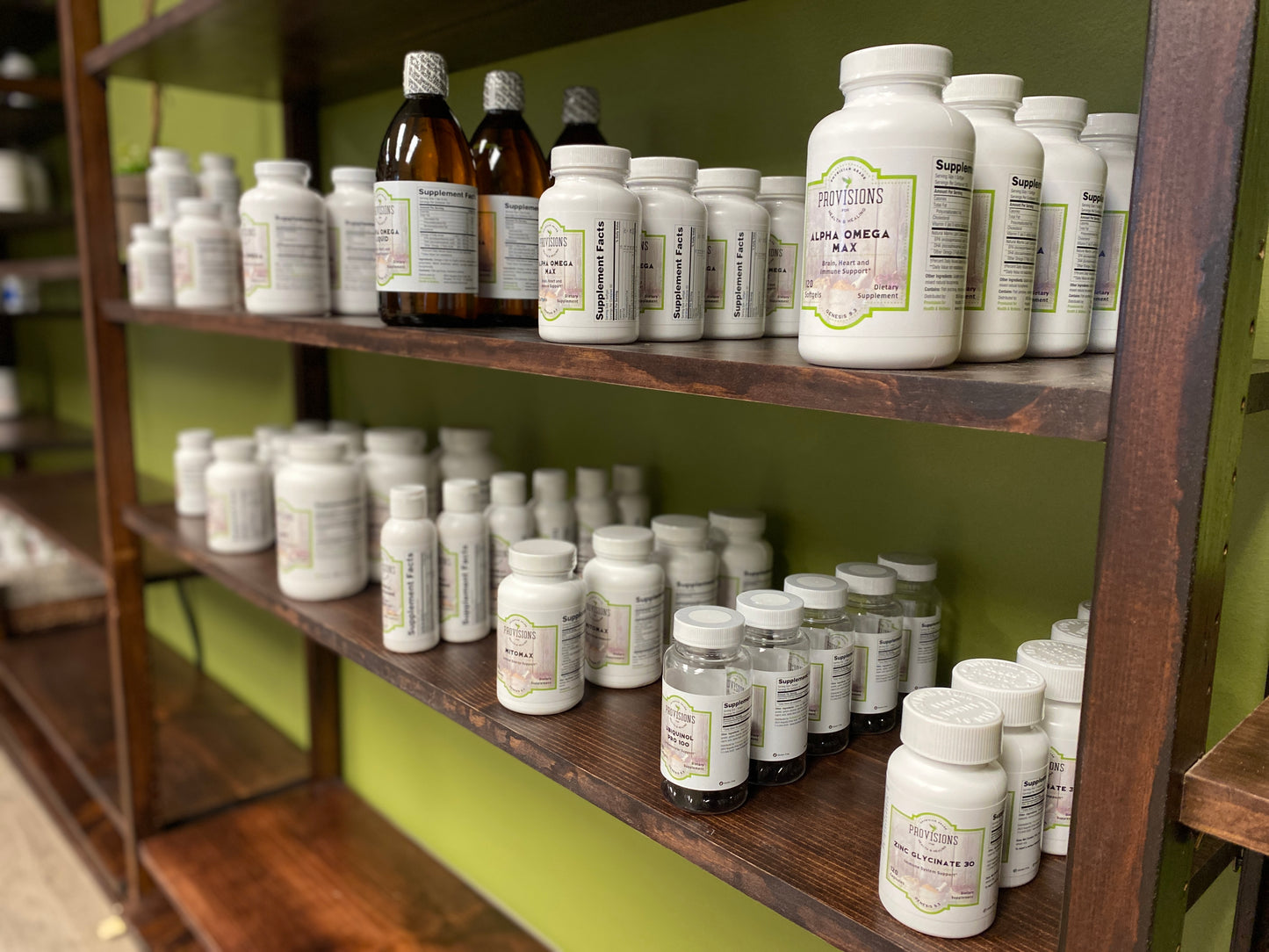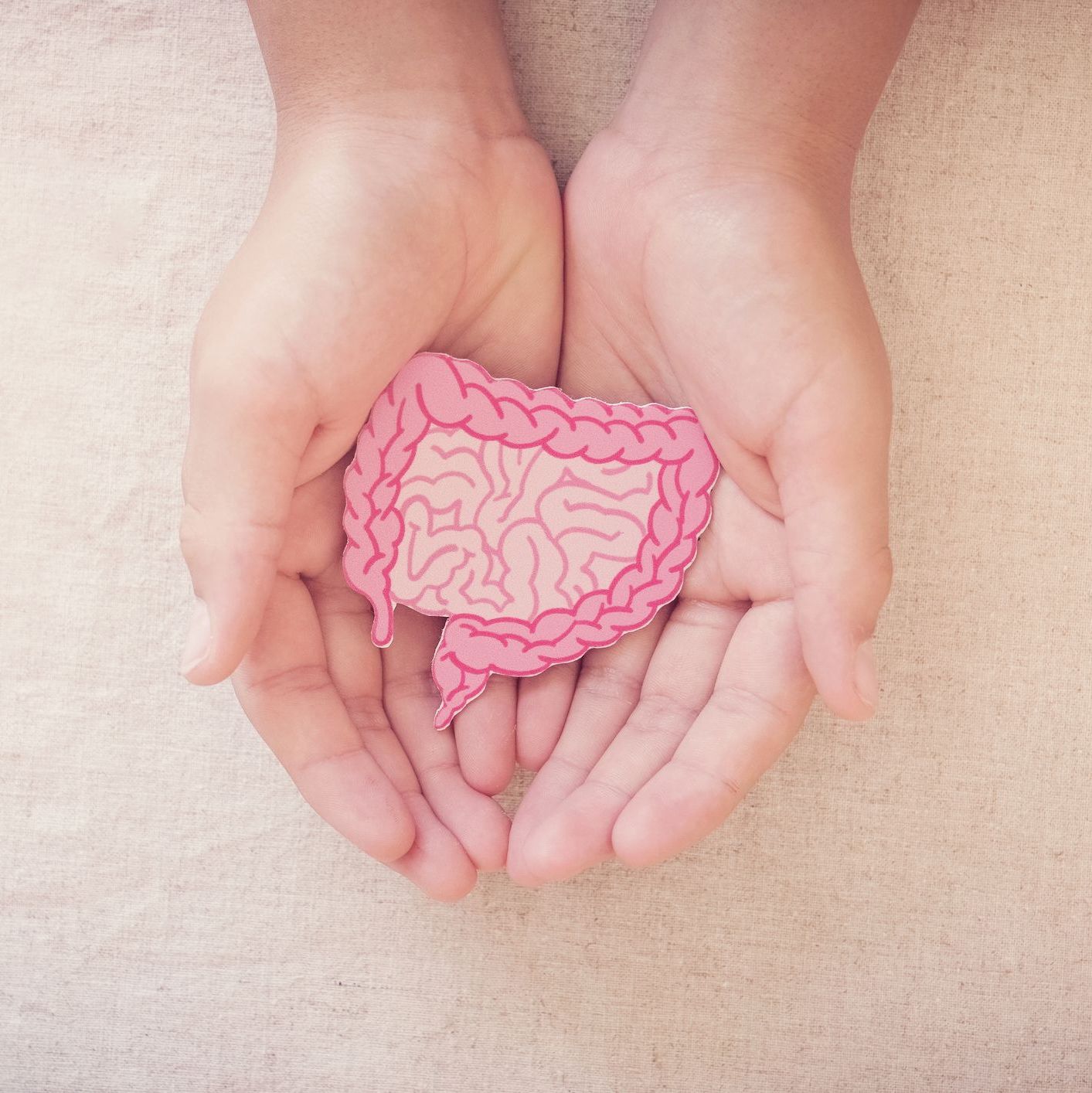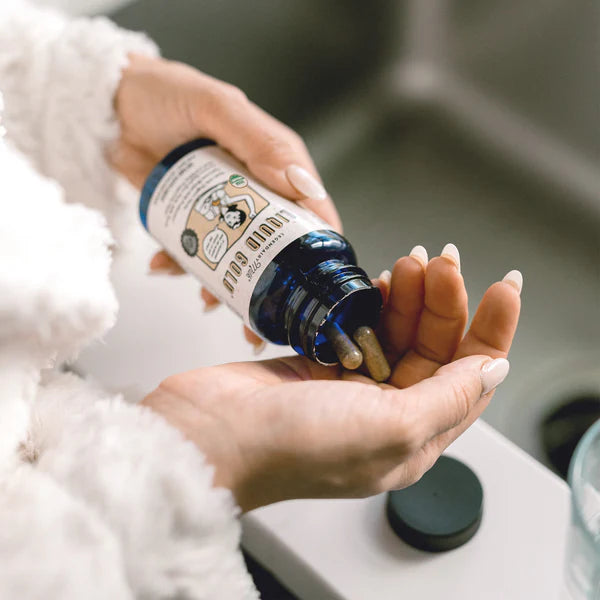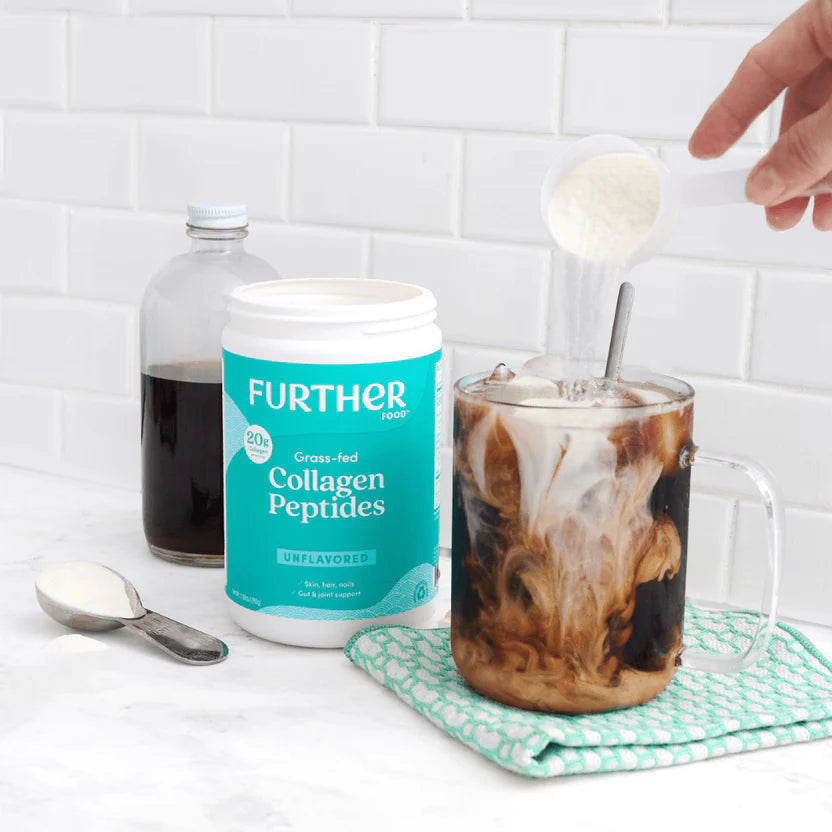LMNT Electrolytes
ONLY AVAILABLE IN-STORE
In stock - 10 left
In stock - 30 left
In stock - 12 left
In stock - 16 left
In stock - 6 left
In stock - 29 left
Selling fast! - 5 left
In stock - 12 left
In stock - 12 left
In stock - 6 left
In stock - 32 left
In stock - 10 left
In stock - 24 left
In stock - 8 left
In stock - 23 left
In stock - 10 left
In stock - 20 left
Selling fast! - 1 left
Back in stock soon
In stock - 13 left
In stock - 14 left
Let’s dive into the clinical evidence behind the LMNT electrolyte ratio.
Sodium in LMNT
Each stick pack of LMNT contains 1,000 mg of sodium. Sodium is an essential mineral — the stuff of life — and many folks need more than they think. There are several reasons for this:
- To replace heavy sodium losses through sweat. Athletes can lose several grams of sodium when training, particularly in hot, humid climates. We’ve talked to professional athletes’ trainers and they often log up to a 10-gram sodium loss in a hard practice or game.
- To balance diets lacking in sodium. Processed foods contribute about 70% of US Americans’ sodium intake. When you ditch processed foods in favor of a healthy Paleo or whole foods diet, you significantly reduce your sodium intake.
-
To increase sodium intake on diets which cause rapid sodium loss:
- Low-carb diets (especially ketogenic diets) minimize the body’s production of insulin. Consequently, your kidneys excrete sodium at an increased rate.
- Fasting minimizes insulin similarly to low-carb diets, causing rapid urinary loss of sodium. In addition, you don’t consume any sodium via food during a fast.
- To help people reach a baseline of 4–6 grams of sodium per day.
Athletes and folks on low-carb diets may need more sodium, but isn’t salt bad for your heart? The truth is, that’s not nearly as cut and dry as it’s been made out to be. Our 4–6 gram target comes from a 2011 JAMA study which found that 4–6 grams of sodium per day was the sweet spot for minimizing heart attack and stroke risk. To be clear, that’s a starting point. Folks with any of the aforementioned diet and lifestyle factors often need more.
Potassium in LMNT
Each stick pack of LMNT contains 200 mg of potassium, which is ⅕ of LMNT’s sodium content (1 gram). This 5:1 sodium-to-potassium ratio is important – let’s geek out on why now.
The sodium-potassium pump is a life-sustaining protein pump in our neurons’ cell membranes. For every 3 sodium ions it releases, it takes in 2 potassium ions — a process which enables everything from muscle contraction to neuronal firing. To help our pump function optimally, our total sodium and potassium intake should reflect this 3:2 ratio.
Because athletes, low-carbers, and intermittent fasters alike incur greater sodium losses, and because minimally processed foods are naturally low in sodium, sodium tends to be the bigger issue. To account for this, LMNT was intentionally formulated with a 5:1 sodium-to-potassium ratio. It puts us in a better position to hit the 3:2 sodium-potassium pump ratio.
While we could have put more potassium in LMNT, we find it’s ideal to consume potassium mostly through diet. Yes, diets low in carbs are often low in potassium-rich foods like fruit and potatoes, and more potassium is lost through urine on keto. But eating plenty of foods like meat, avocados, spinach, etc. should get even ketogenic dieters most of the way to the sodium-potassium pump ratio (3:2).
Potassium is also an issue for people eating a plant-poor Standard American Diet (SAD). The SAD is why only 20–40% of Americans achieve the daily adequate intake set by the National Academy of Medicine (3.4 grams for men and 2.6 grams for women). And that’s just adequate. The evidence for higher intakes (between 3.5–5 grams per day) being optimal is strong, especially for potassium reducing blood pressure.
When establishing your personal goal, keep in mind factors like your size, sodium intake, activity level, and whether you’re pregnant or breastfeeding. These and other diet & lifestyle factors all affect your potassium needs.
Magnesium in LMNT
Each stick pack of LMNT contains 60 mg magnesium.
Magnesium is a crucial mineral. It aids in energy production, DNA repair, muscle synthesis, restful sleep, and many other things we care about, yet up to 30% of the population may be deficient in magnesium. This is likely why we see positive effects from magnesium supplementation on sleep, strength, anxiety, and depression.
Anthropological evidence suggests that our ancestors consumed about 600 mg of magnesium per day. Between 400–600 mg seems to be a reasonable target for optimal health, and there’s no downside to shooting for the upper end of that range. Try to get there with magnesium-rich whole foods first, then supplement your shortfall.
The Electrolytes In LMNT
As you can now likely recall in your sleep, each serving of LMNT contains 1000 mg of sodium, 200 mg of potassium, and 60 mg of magnesium.
This science-backed ratio allows you to get enough of these vital minerals without throwing off your body’s very particular electrolyte balance.
We want healthful hydration to be an easy box to check on your path to health and wellness. Bring a stick pack of LMNT wherever you’re headed, add it to water, and drink to thirst. We also recognize that LMNT isn’t an option for everyone, and that hydration is only one important factor in our well-being. We strongly recommend eating a diet of minimally processed whole foods as a part of holistic health.
Description
Let’s dive into the clinical evidence behind the LMNT electrolyte ratio.
Sodium in LMNT
Each stick pack of LMNT contains 1,000 mg of sodium. Sodium is an essential mineral — the stuff of life — and many folks need more than they think. There are several reasons for this:
- To replace heavy sodium losses through sweat. Athletes can lose several grams of sodium when training, particularly in hot, humid climates. We’ve talked to professional athletes’ trainers and they often log up to a 10-gram sodium loss in a hard practice or game.
- To balance diets lacking in sodium. Processed foods contribute about 70% of US Americans’ sodium intake. When you ditch processed foods in favor of a healthy Paleo or whole foods diet, you significantly reduce your sodium intake.
-
To increase sodium intake on diets which cause rapid sodium loss:
- Low-carb diets (especially ketogenic diets) minimize the body’s production of insulin. Consequently, your kidneys excrete sodium at an increased rate.
- Fasting minimizes insulin similarly to low-carb diets, causing rapid urinary loss of sodium. In addition, you don’t consume any sodium via food during a fast.
- To help people reach a baseline of 4–6 grams of sodium per day.
Athletes and folks on low-carb diets may need more sodium, but isn’t salt bad for your heart? The truth is, that’s not nearly as cut and dry as it’s been made out to be. Our 4–6 gram target comes from a 2011 JAMA study which found that 4–6 grams of sodium per day was the sweet spot for minimizing heart attack and stroke risk. To be clear, that’s a starting point. Folks with any of the aforementioned diet and lifestyle factors often need more.
Potassium in LMNT
Each stick pack of LMNT contains 200 mg of potassium, which is ⅕ of LMNT’s sodium content (1 gram). This 5:1 sodium-to-potassium ratio is important – let’s geek out on why now.
The sodium-potassium pump is a life-sustaining protein pump in our neurons’ cell membranes. For every 3 sodium ions it releases, it takes in 2 potassium ions — a process which enables everything from muscle contraction to neuronal firing. To help our pump function optimally, our total sodium and potassium intake should reflect this 3:2 ratio.
Because athletes, low-carbers, and intermittent fasters alike incur greater sodium losses, and because minimally processed foods are naturally low in sodium, sodium tends to be the bigger issue. To account for this, LMNT was intentionally formulated with a 5:1 sodium-to-potassium ratio. It puts us in a better position to hit the 3:2 sodium-potassium pump ratio.
While we could have put more potassium in LMNT, we find it’s ideal to consume potassium mostly through diet. Yes, diets low in carbs are often low in potassium-rich foods like fruit and potatoes, and more potassium is lost through urine on keto. But eating plenty of foods like meat, avocados, spinach, etc. should get even ketogenic dieters most of the way to the sodium-potassium pump ratio (3:2).
Potassium is also an issue for people eating a plant-poor Standard American Diet (SAD). The SAD is why only 20–40% of Americans achieve the daily adequate intake set by the National Academy of Medicine (3.4 grams for men and 2.6 grams for women). And that’s just adequate. The evidence for higher intakes (between 3.5–5 grams per day) being optimal is strong, especially for potassium reducing blood pressure.
When establishing your personal goal, keep in mind factors like your size, sodium intake, activity level, and whether you’re pregnant or breastfeeding. These and other diet & lifestyle factors all affect your potassium needs.
Magnesium in LMNT
Each stick pack of LMNT contains 60 mg magnesium.
Magnesium is a crucial mineral. It aids in energy production, DNA repair, muscle synthesis, restful sleep, and many other things we care about, yet up to 30% of the population may be deficient in magnesium. This is likely why we see positive effects from magnesium supplementation on sleep, strength, anxiety, and depression.
Anthropological evidence suggests that our ancestors consumed about 600 mg of magnesium per day. Between 400–600 mg seems to be a reasonable target for optimal health, and there’s no downside to shooting for the upper end of that range. Try to get there with magnesium-rich whole foods first, then supplement your shortfall.
The Electrolytes In LMNT
As you can now likely recall in your sleep, each serving of LMNT contains 1000 mg of sodium, 200 mg of potassium, and 60 mg of magnesium.
This science-backed ratio allows you to get enough of these vital minerals without throwing off your body’s very particular electrolyte balance.
We want healthful hydration to be an easy box to check on your path to health and wellness. Bring a stick pack of LMNT wherever you’re headed, add it to water, and drink to thirst. We also recognize that LMNT isn’t an option for everyone, and that hydration is only one important factor in our well-being. We strongly recommend eating a diet of minimally processed whole foods as a part of holistic health.
LMNT Electrolytes
In stock - 10 left
In stock - 30 left
In stock - 12 left
In stock - 16 left
In stock - 6 left
In stock - 29 left
Selling fast! - 5 left
In stock - 12 left
In stock - 12 left
In stock - 6 left
In stock - 32 left
In stock - 10 left
In stock - 24 left
In stock - 8 left
In stock - 23 left
In stock - 10 left
In stock - 20 left
Selling fast! - 1 left
Back in stock soon
In stock - 13 left
In stock - 14 left
Let’s dive into the clinical evidence behind the LMNT electrolyte ratio.
Sodium in LMNT
Each stick pack of LMNT contains 1,000 mg of sodium. Sodium is an essential mineral — the stuff of life — and many folks need more than they think. There are several reasons for this:
- To replace heavy sodium losses through sweat. Athletes can lose several grams of sodium when training, particularly in hot, humid climates. We’ve talked to professional athletes’ trainers and they often log up to a 10-gram sodium loss in a hard practice or game.
- To balance diets lacking in sodium. Processed foods contribute about 70% of US Americans’ sodium intake. When you ditch processed foods in favor of a healthy Paleo or whole foods diet, you significantly reduce your sodium intake.
-
To increase sodium intake on diets which cause rapid sodium loss:
- Low-carb diets (especially ketogenic diets) minimize the body’s production of insulin. Consequently, your kidneys excrete sodium at an increased rate.
- Fasting minimizes insulin similarly to low-carb diets, causing rapid urinary loss of sodium. In addition, you don’t consume any sodium via food during a fast.
- To help people reach a baseline of 4–6 grams of sodium per day.
Athletes and folks on low-carb diets may need more sodium, but isn’t salt bad for your heart? The truth is, that’s not nearly as cut and dry as it’s been made out to be. Our 4–6 gram target comes from a 2011 JAMA study which found that 4–6 grams of sodium per day was the sweet spot for minimizing heart attack and stroke risk. To be clear, that’s a starting point. Folks with any of the aforementioned diet and lifestyle factors often need more.
Potassium in LMNT
Each stick pack of LMNT contains 200 mg of potassium, which is ⅕ of LMNT’s sodium content (1 gram). This 5:1 sodium-to-potassium ratio is important – let’s geek out on why now.
The sodium-potassium pump is a life-sustaining protein pump in our neurons’ cell membranes. For every 3 sodium ions it releases, it takes in 2 potassium ions — a process which enables everything from muscle contraction to neuronal firing. To help our pump function optimally, our total sodium and potassium intake should reflect this 3:2 ratio.
Because athletes, low-carbers, and intermittent fasters alike incur greater sodium losses, and because minimally processed foods are naturally low in sodium, sodium tends to be the bigger issue. To account for this, LMNT was intentionally formulated with a 5:1 sodium-to-potassium ratio. It puts us in a better position to hit the 3:2 sodium-potassium pump ratio.
While we could have put more potassium in LMNT, we find it’s ideal to consume potassium mostly through diet. Yes, diets low in carbs are often low in potassium-rich foods like fruit and potatoes, and more potassium is lost through urine on keto. But eating plenty of foods like meat, avocados, spinach, etc. should get even ketogenic dieters most of the way to the sodium-potassium pump ratio (3:2).
Potassium is also an issue for people eating a plant-poor Standard American Diet (SAD). The SAD is why only 20–40% of Americans achieve the daily adequate intake set by the National Academy of Medicine (3.4 grams for men and 2.6 grams for women). And that’s just adequate. The evidence for higher intakes (between 3.5–5 grams per day) being optimal is strong, especially for potassium reducing blood pressure.
When establishing your personal goal, keep in mind factors like your size, sodium intake, activity level, and whether you’re pregnant or breastfeeding. These and other diet & lifestyle factors all affect your potassium needs.
Magnesium in LMNT
Each stick pack of LMNT contains 60 mg magnesium.
Magnesium is a crucial mineral. It aids in energy production, DNA repair, muscle synthesis, restful sleep, and many other things we care about, yet up to 30% of the population may be deficient in magnesium. This is likely why we see positive effects from magnesium supplementation on sleep, strength, anxiety, and depression.
Anthropological evidence suggests that our ancestors consumed about 600 mg of magnesium per day. Between 400–600 mg seems to be a reasonable target for optimal health, and there’s no downside to shooting for the upper end of that range. Try to get there with magnesium-rich whole foods first, then supplement your shortfall.
The Electrolytes In LMNT
As you can now likely recall in your sleep, each serving of LMNT contains 1000 mg of sodium, 200 mg of potassium, and 60 mg of magnesium.
This science-backed ratio allows you to get enough of these vital minerals without throwing off your body’s very particular electrolyte balance.
We want healthful hydration to be an easy box to check on your path to health and wellness. Bring a stick pack of LMNT wherever you’re headed, add it to water, and drink to thirst. We also recognize that LMNT isn’t an option for everyone, and that hydration is only one important factor in our well-being. We strongly recommend eating a diet of minimally processed whole foods as a part of holistic health.
Description
Let’s dive into the clinical evidence behind the LMNT electrolyte ratio.
Sodium in LMNT
Each stick pack of LMNT contains 1,000 mg of sodium. Sodium is an essential mineral — the stuff of life — and many folks need more than they think. There are several reasons for this:
- To replace heavy sodium losses through sweat. Athletes can lose several grams of sodium when training, particularly in hot, humid climates. We’ve talked to professional athletes’ trainers and they often log up to a 10-gram sodium loss in a hard practice or game.
- To balance diets lacking in sodium. Processed foods contribute about 70% of US Americans’ sodium intake. When you ditch processed foods in favor of a healthy Paleo or whole foods diet, you significantly reduce your sodium intake.
-
To increase sodium intake on diets which cause rapid sodium loss:
- Low-carb diets (especially ketogenic diets) minimize the body’s production of insulin. Consequently, your kidneys excrete sodium at an increased rate.
- Fasting minimizes insulin similarly to low-carb diets, causing rapid urinary loss of sodium. In addition, you don’t consume any sodium via food during a fast.
- To help people reach a baseline of 4–6 grams of sodium per day.
Athletes and folks on low-carb diets may need more sodium, but isn’t salt bad for your heart? The truth is, that’s not nearly as cut and dry as it’s been made out to be. Our 4–6 gram target comes from a 2011 JAMA study which found that 4–6 grams of sodium per day was the sweet spot for minimizing heart attack and stroke risk. To be clear, that’s a starting point. Folks with any of the aforementioned diet and lifestyle factors often need more.
Potassium in LMNT
Each stick pack of LMNT contains 200 mg of potassium, which is ⅕ of LMNT’s sodium content (1 gram). This 5:1 sodium-to-potassium ratio is important – let’s geek out on why now.
The sodium-potassium pump is a life-sustaining protein pump in our neurons’ cell membranes. For every 3 sodium ions it releases, it takes in 2 potassium ions — a process which enables everything from muscle contraction to neuronal firing. To help our pump function optimally, our total sodium and potassium intake should reflect this 3:2 ratio.
Because athletes, low-carbers, and intermittent fasters alike incur greater sodium losses, and because minimally processed foods are naturally low in sodium, sodium tends to be the bigger issue. To account for this, LMNT was intentionally formulated with a 5:1 sodium-to-potassium ratio. It puts us in a better position to hit the 3:2 sodium-potassium pump ratio.
While we could have put more potassium in LMNT, we find it’s ideal to consume potassium mostly through diet. Yes, diets low in carbs are often low in potassium-rich foods like fruit and potatoes, and more potassium is lost through urine on keto. But eating plenty of foods like meat, avocados, spinach, etc. should get even ketogenic dieters most of the way to the sodium-potassium pump ratio (3:2).
Potassium is also an issue for people eating a plant-poor Standard American Diet (SAD). The SAD is why only 20–40% of Americans achieve the daily adequate intake set by the National Academy of Medicine (3.4 grams for men and 2.6 grams for women). And that’s just adequate. The evidence for higher intakes (between 3.5–5 grams per day) being optimal is strong, especially for potassium reducing blood pressure.
When establishing your personal goal, keep in mind factors like your size, sodium intake, activity level, and whether you’re pregnant or breastfeeding. These and other diet & lifestyle factors all affect your potassium needs.
Magnesium in LMNT
Each stick pack of LMNT contains 60 mg magnesium.
Magnesium is a crucial mineral. It aids in energy production, DNA repair, muscle synthesis, restful sleep, and many other things we care about, yet up to 30% of the population may be deficient in magnesium. This is likely why we see positive effects from magnesium supplementation on sleep, strength, anxiety, and depression.
Anthropological evidence suggests that our ancestors consumed about 600 mg of magnesium per day. Between 400–600 mg seems to be a reasonable target for optimal health, and there’s no downside to shooting for the upper end of that range. Try to get there with magnesium-rich whole foods first, then supplement your shortfall.
The Electrolytes In LMNT
As you can now likely recall in your sleep, each serving of LMNT contains 1000 mg of sodium, 200 mg of potassium, and 60 mg of magnesium.
This science-backed ratio allows you to get enough of these vital minerals without throwing off your body’s very particular electrolyte balance.
We want healthful hydration to be an easy box to check on your path to health and wellness. Bring a stick pack of LMNT wherever you’re headed, add it to water, and drink to thirst. We also recognize that LMNT isn’t an option for everyone, and that hydration is only one important factor in our well-being. We strongly recommend eating a diet of minimally processed whole foods as a part of holistic health.

Provisions Sells Provisions!
Along with the plethora of other brands we sell, we also have our own brand of select products! Come check us out!









































